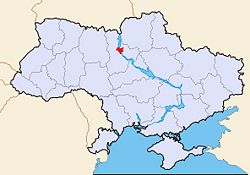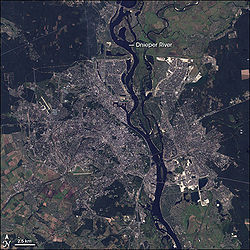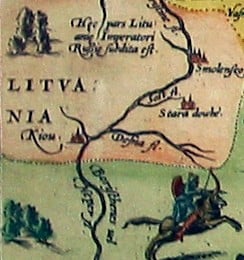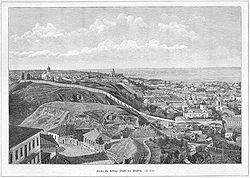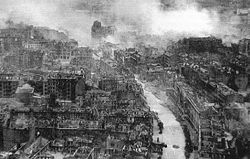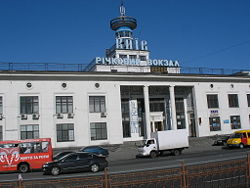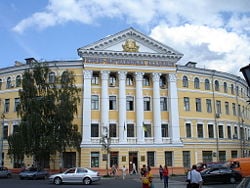Difference between revisions of "Kyiv" - New World Encyclopedia
Mike Butler (talk | contribs) |
Mike Butler (talk | contribs) |
||
| Line 194: | Line 194: | ||
Some 1,069,700 people have higher or completed secondary education, a significant increase of 21.7% since 1989. | Some 1,069,700 people have higher or completed secondary education, a significant increase of 21.7% since 1989. | ||
| − | |||
| − | |||
| − | |||
| − | |||
| − | |||
| − | |||
| − | |||
| − | |||
| − | |||
| − | |||
| − | |||
| − | |||
| − | |||
| − | |||
| − | |||
| − | |||
| − | |||
| − | |||
| − | |||
| − | |||
| − | |||
| − | |||
| − | |||
| − | |||
| − | |||
| − | |||
| − | |||
| − | |||
| − | |||
| − | |||
| − | |||
| − | |||
| − | |||
| − | |||
| − | |||
| − | |||
| − | |||
| − | |||
| − | |||
| − | |||
| − | |||
| − | |||
| − | |||
| − | |||
| − | |||
| − | |||
| − | |||
| − | |||
| − | |||
| − | |||
| − | |||
| − | |||
| − | |||
| − | |||
| − | |||
| − | |||
| − | |||
| − | |||
| − | |||
| − | |||
| − | |||
| − | |||
| − | |||
| − | |||
| − | |||
| − | |||
| − | |||
==Gallery== | ==Gallery== | ||
Revision as of 01:13, 28 December 2008
| Kyiv Київ Kiev |
|||
| Kiev, an old and a modern city. A construction crane and the towers of the Kiev Monastery of the Caves. | |||
|
|||
| Map of Ukraine with Kiev highlighted | |||
| Coordinates: {{#invoke:Coordinates|coord}}{{#coordinates:50|27|00|N|30|31|24|E|type:city | |||
|---|---|---|---|
| name= }} | |||
| Country | |||
| Municipality | Kiev City Municipality | ||
| Raions | List of 10
|
||
| Government | |||
| - Mayor | Leonid Chernovetskyi | ||
| Elevation | 179 m (587 ft) | ||
| Population (April, 2007) | |||
| - Total | 2.7 million (official est.) | ||
| - Density | 3,299/km² (8,544.4/sq mi) | ||
| Time zone | EET (UTC+2) | ||
| - Summer (DST) | EEST (UTC+3) | ||
| Postal code | 01xxx-04xxx | ||
| Area code(s) | +380 44 | ||
| License plate | AA (before 2004: КА,КВ,КЕ,КН,КІ,KT) | ||
| Sister cities | Ankara, Athens, Belgrade, Brussels, Budapest, Chicago, Chişinău, Edinburgh, Florence, Helsinki, Kraków, Kyoto, Leipzig, Minsk, Munich, Odense, Paris, Pretoria, Riga, Rome, Santiago de Chile, Sofia, Stockholm, Tallinn, Tampere, Tbilisi, Toronto, Toulouse, Warsaw, Wuhan, Vienna, Vilnius, Pereira, Yerevan |
||
| Website: http://www.kmr.gov.ua | |||
Kiev, also known as Kyiv (Ukrainian: Київ ▶, Kyiv, IPA: [ˈkɪjiw]; Russian: Ки́ев ▶, Kiyev; see also Cities' alternative names), is the capital and the largest city of Ukraine, located in the north central part of the country on the Dnieper River.
Kiev is an important industrial, scientific, educational and cultural centre of Eastern Europe. It is home to many high-tech industries, higher education institutions and world-famous historical landmarks. The city has an extensive infrastructure and highly developed system of public transport, including the Kiev Metro.
Founded in the fifth century as a trading post, it acquired eminence in the 10th to 12th centuries a capital of Rus', a medieval East Slavic state. Destroyed during the Mongol invasion in 1240, it was a provincial capital of marginal importance until the city prospered during the Russian industrial revolution in the late 19th century. From 1934, Kiev was the capital of the Ukrainian Soviet Socialist Republic, and, from 1934. During World War II, the city suffered significant damage, but recovered, remaining the third largest city of the Soviet Union, to become, after independence in 1991, Kiev remained the capital of Ukraine.
Geography
Kyiv/Kiev is translated as "belonging to Kyi". Kyi was one of four legendary founders of the city, along with brothers Kyi, Shchek, and Khoryv, and sister Lybid. Kiev is the traditional and most commonly used English spelling of the name for the city,[1] but since the 1995 adoption of Kyiv by the Ukrainian government as a preferred spelling, the Ukrainianized version Kyiv is gaining usage.
Kiev is located on both sides of the Dnieper River, which flows south through the city towards the Black Sea. The older right-bank (western) part of the city is represented by numerous woody hills, ravines and small rivers. It is a part of the larger Dnieper Upland adjoining the western bank of the Dnieper in its mid-flow. Kiev expanded to the Dnieper's lowland left bank (to the east) only in the 20th century. Significant areas of the left-bank Dnieper valley were artificially sand-deposited, and are protected by dams.
The Dnieper River forms a branching system of tributaries, isles, and harbors within the city limits. The city is adjoined by the mouth of the Desna River and the Kiev Reservoir in the north, and the Kaniv Reservoir in the south. Both the Dnieper and Desna rivers are navigable at Kiev, although regulated by the reservoir shipping locks and limited by winter freeze-over.
Kiev's elevation is 587.3 feet (179 meters).
Kiev has a continental humid climate. The average maximum daytime temperature in January of 24.8°F (-4°C), rising to an average maximum of around 77°F (25°C) in July. Snow cover usually lies from mid-November to the end of March, with the frost-free period lasting 180 days on average, but surpassing 200 days in recent years. Average annual precipitation is 26.6 inches (677mm).
Kiev covers an area of 300 square miles (780 square kilometers) on both banks of the Dnieper.
The Dnieper River naturally divides Kiev into the Right Bank and the Left Bank areas. Historically located on the western right bank of the river, the city expanded into the left bank only in the 20th century. Most of the Kiev's attractions as well as the majority of business and governmental institutions are located at the right bank. The eastern Left Bank is predominantly residential. There are large industrial and green areas in both the Right Bank and the Left Bank.
History
The first settlements in the vicinity of Kiev date from 15,000 to 40,000 years ago, according to archaeological findings. Around 3000 B.C.E., tribes there practised agriculture and animal husbandry, and traded with the nomadic steppe dwellers to the south, Scythians, Sarmatians, and Khazars, and with the ancient Greek colonies on the Black Sea coast.
According to 12th-century chronicle, each of three East Slav brothers, Kiy, Shchek, and Khoriv, established a settlement upon a hill, which became Kiev. A small stream in the area was named after their sister Lybed. Lacking historical records for the founding dates of the city, it is believed that Kiev was probably founded in the fifth century.[2] With the exact time of city foundation being hard to determine, May 1982 was chosen to celebrate the city's 1500th anniversary.
Capital of Rus
During the eighth and ninth centuries, Kiev was an outpost of the Khazar empire. Starting in the late ninth century Kiev was ruled by the Varangian nobility. About 882, the Novgorod ruler Oleg captured Kiev and made it the centre of the first East Slavic state, Kievan Rus, which thrived from the 11th to the early 12th century. The introduction of Christianity in 988 made Kiev the spiritual centre of Rus. The Cathedral of St Sophia, parts of the Monastery of the Caves, and the ruins of the Golden Gate remain from the 400 churches that represented the city’s wealth and religious importance at that time.
Troops of Andrei Bogolyubsky (1111–1174), a prince of Vladimir-Suzdal, sacked Kiev during a war in 1169. In 1240, the Mongol invasion of Rus led by Batu Khan (1205–1255) destroyed Kiev, which was reputed as one of the largest cities in the world, with a population exceeding 100,000 people.
Under Lithuania and Poland
In 1321, the greatly diminished city and surrounding area was conquered by Gediminas (1275–1341) for the Grand Duchy of Lithuania. Kiev was reduced to a fortress and minor market on the defined frontier between Lithuania and Tatars of the steppe. The city was frequently attacked by Crimean Tatars and in 1482 was destroyed again by Crimean Khan Meñli I Giray. The 1569 Union of Lublin, between Lithuania and Poland, meant Kiev and the Ukrainian lands were controlled by the Polish-Lithuanian Commonwealth. Kiev became a center of Orthodox opposition to expanding of Polish Roman Catholic influence. Peter Mogila (1596–1646), an Eastern Orthodox theologian and metropolitan of Kiev from 1633 to 1646, founded what later became the Academy of Kiev.
Life under the tsars
Cossack hetman Bohdan Khmelnytsky (1595—1657) and Crimean Tatars entered Kiev in 1648, in 1654, signed the Pereyaslav Agreement which submitted Ukraine to Moscow until 1667, when the Treaty of Andrusovo made Kiev and the Dnieper left-bank part of Ukraine an autonomous Cossack state protected by Moscow. Autonomy was finally abolished in 1775 by the Empress Catherine the Great (1729-1796). Under tsarist Russian rule, Kiev was a primary Christian centre, attracting pilgrims, and the cradle of many of the empire's most important religious figures, but until the 19th century the city's commercial importance remained marginal. Kiev prospered again during the late 19th century industrial revolution in the Russian Empire, when it became the third most important city of the Empire and the centre of commerce of its southwest.
Revolution
In the turbulent period following the 1917 Russian Revolution, Kiev became the capital of the independent Ukrainian People's Republic on November 7, 1917.
Later Kiev became a war zone in the struggle between Ukrainian, Polish and Russian Bolshevik governments in the time of Russian Revolution, Ukrainian-Soviet War, Polish-Ukrainian War and Polish-Soviet War. Kiev changed hands 16 times from the end of 1918 to August 1920.[3]
The Bolsheviks took control of Kiev in 1918 and then finally in 1920. After the Ukrainian SSR was formed in 1922, Kharkiv was declared its capital. The Soviet industrialization that started in the late 1920s turned the city, a former centre of commerce and religion, into an industrial, technological and scientific centre.
In 1932-1933, the city population, as most other Ukrainian territories, suffered from Great Famine (known as the Holodomor), which devastated the part of the migrant population not registered for the ration cards.
In 1934, the capital of Ukrainian SSR was moved to Kiev. The city boomed again during the years of the Soviet industrialization as its population grew rapidly and many industrial giants were created. However, many old churches, and structures, such as St. Michael's Golden-Domed Cathedral, Fountain of Samson, were demolished, while others, such as Saint Sophia Cathedral were confiscated. Continued migration changed the ethnic balance of the city from the previous Russian-Ukrainian parity to predominantly Ukrainian. Russian remained the dominant language.
In the 1930s, recurring political trials were organized in the city to purge "Ukrainian nationalists", "Western spies" and opponents of Soviet leader Joseph Stalin (1878–1953) inside the Communist Party. In the late 1930s, clandestine mass executions began in Kiev. Thousands of Kievites (mostly intellectuals and party activists) were arrested in the night, hurriedly court-martialed, shot and buried in mass graves.
World War II
In World War II (1939-1945), Nazi Germany occupied Kiev on September 19, 1941. The Battle of Kiev proved disastrous for the Soviet side but it significantly delayed the German advances. The delay also allowed the evacuation of all significant industrial enterprises from Kiev.
Before the evacuation, the Red Army planted more than 10,000 mines throughout Kiev, controlled by wireless detonators. On September 24, when the German invaders had settled into the city, the mines were detonated, causing many of the major buildings to collapse, and setting the city ablaze for five days. More than a thousand Germans were killed in what was "the biggest and most sophisticated booby trap in history."
Babi Yar, a location in Kiev, became a site of one of the most infamous Nazi World War II war crimes. During two days in September 1941, at least 33,771 Jews from Kiev and its suburbs were massacred at Babi Yar by the SS Einsatzgruppen, according to their own reports. Babi Yar was a site of additional mass murders of captured Soviet citizens over the following years, including Roma, POWs and anyone suspected in aiding the resistance movement), perhaps as many as 60,000 additional people.
The Soviet Army liberated the city on November 6, 1943. For its role during the war, the city was later awarded the title Hero City.
Post-war growth
Post-wartime in Kiev was a period of rapid socio-economic growth. The arms race of the Cold War caused the establishment of a powerful technological complex in the city (both research and development and production), specializing in aerospace, microelectronics and precision optics. Dozens of industrial companies were created employing highly skilled personnel. Sciences and technology became the main issues of Kiev's intellectual life. Dozens of research institutes in various fields formed the Academy of Sciences of the Ukrainian SSR.
Kiev also became an important military center of the Soviet Union. More than a dozen military schools and academies were established here, also specializing in high-tech warfare.
The city grew tremendously from the 1950s to the '80s. The Metro was built as were new river bridges (connecting the old city with Left Bank suburbs), and Boryspil Airport (the city's second, and later international airport).
A new waive of Russification took place in the 1970s, in which universities and research facilities were gradually and secretly discouraged from using Ukrainian.
Chernobyl nuclear accident
On April 26, 1986, the fourth reactor of the Chernobyl Nuclear Power Plant exploded. The explosion occurred only 100km north of Kiev. However, the prevailing northward winds blew the most substantial radioactive debris away from the city. Some areas of Kiev were polluted by radioactive dust. Kievans were neither informed about the actual threat of the accident, nor recognized as its victims. On May 1, 1986, (a few days after the accident), local Communist Party of the Soviet Union leaders ordered Kievans (including hundreds of children) to take part in a mass civil parade in the city's center—"to prevent panic". Later, thousands of refugees from accident zone were resettled in Kiev.
Independence
After 57 years as the capital of the Ukrainian Soviet Socialist Republic of the Soviet Union, and in the wake of the 1985-1991 collapse of the Soviet Union, the Declaration of Independence of Ukraine was proclaimed in the city by the Ukrainian parliament on August 24, 1991. Kiev became the capital.
The city was the site of mass protests over the 2004 Ukrainian presidential election by supporters of opposition candidate Viktor Yushchenko (b. 1954) beginning November 22, 2004, at Independence Square. Much smaller counter-protests in favor of Viktor Yanukovych (b. 1950) also took place.
Kiev hosted the Eurovision Song Contest 2005 on May 19 and May 21 in the Palace of Sports.
Government
Ukraine is a republic in which the president, who is elected by popular vote for a five-year term, and is eligible for a second term, is the chief of state, and the prime minister is head of government. The unicameral Supreme Council, or Verkhovna Rada, has 450 seats allocated to members on a proportional basis to those parties that gain three percent or more of the national electoral vote. Members serve five-year terms.
The municipality of the city of Kiev has a special legal status within Ukraine in that the city is subordinated directly to the national-level branches of the Government of Ukraine, skipping the regional level authorities of the Kiev Oblast. Additionally, the leading governmental position is held by the locally elected, rather than appointed, figure, and the municipal self-governance institutions have a higher than elsewhere in Ukraine latitude in the local affairs.
The popularly elected Kiev City Council is the city-level legislative body of Kiev, with a broad scope of jurisdiction over the local issues. The council is chaired by the Mayor of Kiev, who is independently elected by a separate popular election. The city mayor is also the head of the City State Administration
Administratively, the city is divided into "raions" ("districts"), which have their own locally elected governments with jurisdiction over a limited scope of affairs. Presently, there are 10 raions.
Kiev is further informally divided into historical or territorial neighborhoods, each housing from about 5000 to 100,000 inhabitants.
Economy
After Russia, the Ukrainian republic was far and away the most important economic component of the former Soviet Union, producing about four times the output of the next-ranking republic. Its fertile black soil generated more than one-fourth of Soviet agricultural output, and its farms provided substantial quantities of meat, milk, grain, and vegetables to other republics. Likewise, its diversified heavy industry supplied the unique equipment (for example, large diameter pipes) and raw materials to industrial and mining sites (vertical drilling apparatus) in other regions of the former USSR. Per capita GDP was estimated at $7000 in 2007.
Kiev, as the capital of Ukraine, is the location of government offices. The city is also an important industrial centre, manufacturing a wide range of items.
Kiev has the headquarters for Antonov aircraft manufacturing company. Kiev Arsenal factory, founded in 1764 as a repair and production facility of the Russian army, is one of the oldest and most famous factories in the city.
Other companies produce equipment for chemical works, such as conveyor lines for vulcanized rubber, linoleum, and fertilizer factories, as well as metal-cutting machines. Other engineering products include hydraulic elevators, electrical instruments, armatures, river-and-sea crafts, motorcycles, and cinematography equipment.
Kiev's chemical industry produces resin products, fertilizers, plastics, and chemical fibers. Lumber milling and the production of bricks and reinforced concrete items are another well developed industry. Consumer manufactured goods include cameras, thermos flasks, knitwear, footwear, a range of foodstuffs, and hand watches. Kiev is also a large publishing centre.
Kiev's engineering plants use iron and steel from Dnipropetrovshchyna and the Donets Basin coalfield.
Power is supplied by natural gas, piped from western Ukraine, and by electricity from the Kiev Hydroelectric Power Station, completed in 1968, just upstream of the city at Vyshhorod, and from Trypillia thermal electric station, 25 miles southeast of Kiev.
Kiev has a developed railroad infrastructure including a long-distance passenger station, six cargo stations, depots, and repairing facilities, although this system still fails to meet the demand for passenger service.
Railways and all-weather roads link Kiev to Moscow, Kharkiv, which is Ukraine's second largest city, to the port of Odessa, to southern and western Ukraine, and to Poland.
The Kiev River Port is located on the right bank of the Dnieper River in Podil, the historic and administrative district of the city. The Podil neighborhood has long been an important trade center, especially by water routes. Navigability of the Dneiper River has been improved.
Boryspil Airport serves many international airlines, and the smaller Zhulyany Airport, serves mostly domestic flights and limited flights to nearby countries.
Public transportation in Kiev includes the metro (underground), short-range trains known as elektrichkas, buses, trolleybuses, trams, taxis, and privately owned minibuses, or marshrutkas. The Kiev funicular climbs up the steep right bank of the Dnieper River and transports 10,000 to 15,000 passengers daily.
Demographics
About 2.7 million people live in Kiev, according to 2007 municipal estimates.[4] Other much higher estimates are often published. For instance, the amount of bakery products sold in the city (thus including temporary visitors and commuters) gives a minimum of 3.5 million people (June, 2007).[4]
According to the census data, more than 130 nationalities and ethnic groups reside within the territory of Kiev. Ukrainians constitute the largest ethnic group, accounting for 82.2 percent of the population. Russians comprise 13.1 percent, Jews 0.7 percent, Belarusians 0.6 percent, Poles 0.3 percent, Armenians 0.2 percent, Azerbaijanis 0.1 percent, Tatars 0.1 percent, Georgians 0.1 percent, and Moldovans 0.1 percent.
Both Ukrainian and Russian are commonly spoken in the city, with Russian being more widely used despite the fact that Ukrainian is claimed as their native language by almost three times as many residents as those who claim Russian.[5] According to a 2006 survey, Ukrainian is used at home by 23 percent of Kievans, as 52 percent use Russian and 24 percent switch between both.[6]
Religion
Kiev hosts many universities, the major ones being Kiev National Taras Shevchenko University,[7] the National Technical University "Kiev Polytechnic Institute",[8] and the Kyiv-Mohyla Academy.[9] The total number of institutions of higher education in Kiev approaches 200,[10].
Some 1,069,700 people have higher or completed secondary education, a significant increase of 21.7% since 1989.
Gallery
- Verkhovna Rada Ukrainy.jpg
Verkhovna Rada building, the Ukrainian parliament.
Images
ReferencesISBN links support NWE through referral fees
- ↑ As of 2008, the Oxford English Dictionary includes 19 quotations with 'Kiev' and none with any other spelling. This spelling is also given by Britannica and Columbia Encyclopedia.
- ↑ There are no known historical records as to the founding dates of the city. The Kiev article in Encyclopedia Britannica states: "The village that became the modern city may have been founded as early as the 6th century AD." The Columbia Encyclopedia in Kiev states: "It probably existed as a commercial centre as early as the 5th cent."
- ↑ Eksteins, Modris (1999). Walking Since Daybreak. Houghton Mifflin. ISBN 061808231X.
- ↑ 4.0 4.1 Cite error: Invalid
<ref>tag; no text was provided for refs namedpopulation - ↑ According to the official 2001 census data [1][2] approximately 75% of Kiev's population responded 'Ukrainian' to the native language (ridna mova) census question, and roughly 25% responded 'Russian'. On the other hand, when the question 'What language do you use in everyday life?' was asked in the 2003 sociological survey, the Kievans' answers were distributed as follows: 'mostly Russian': 52%, 'both Russian and Ukrainian in equal measure': 32%, 'mostly Ukrainian': 14%, 'exclusively Ukrainian': 4.3%.
"What language is spoken in Ukraine?", Welcome to Ukraine, 2003/2.. - ↑ "Kiev: the city, its residents, problems of today, wishes for tomorrow.", Zerkalo Nedeli, April 29 - May 12, 2006. in Russian, in Ukrainian
- ↑ See also:Kiev University official website URL accessed on July 28, 2006
- ↑ See also: KPI official website URL accessed on July 28, 2006
- ↑ See also: Kyiv-Mohyla Academy official website URL accessed on July 28, 2006
- ↑ See also: Osvita.org URL accessed on June 20, 2006
Further reading
- Ascher, Abraham. 2002. Russia: a short history. Oxford: Oneworld. ISBN 9781851682423
- Burgess, Tom. 2008. Kiev. Cityspots. Peterborough: Thomas Cook. ISBN 9781841579061
- Magocsi, Paul R. 1996. A history of Ukraine. Seattle: University of Washington Press. ISBN 0295975806.
- Paxton, John, and John Paxton. 1993. Encyclopedia of Russian history: from the Christianization of Kiev to the break-up of the U.S.S.R. Santa Barbara, Calif: ABC-CLIO. ISBN 9780874366907
- "Europe - Viktor Chernomyrdin - A Russian in Kiev". 2007. The Economist. 384 (8536): 39. OCLC 156925148
- "Kiev Offers Baku a Share in Train Project Bypassing Russia; Prospect Seen as Big Boost for Azerbaijan's Economy". 2008. CURRENT DIGEST OF THE POST SOVIET PRESS. 60 (30): 10. OCLC 262070741
External links
- Encyclopaedia Britannica Kiev Retrieved December 16, 2008.
- World Fact Book 2008 Ukraine Retrieved December 16, 2008.
- BBC weather city guides Kiev Retrieved December 16, 2008.
- Kyiv.com Official City Website Retrieved December 17, 2008.
- Kiev sites catalogue Retrieved December 17, 2008.
- Pictures of Kiev Retrieved December 17, 2008.
- Kiev & Kiev From Above - additional views of the Kiev city centre, retrieved December 17, 2008.
- Kiev in Old Postcards Retrieved December 17, 2008.
- The unususal view on Kyiv by the international journalists' team (English) Retrieved December 17, 2008.
- The Christian Science Monitor Kiev or Kyiv: language an issue in Ukraine Retrieved December 17, 2008.
Credits
New World Encyclopedia writers and editors rewrote and completed the Wikipedia article in accordance with New World Encyclopedia standards. This article abides by terms of the Creative Commons CC-by-sa 3.0 License (CC-by-sa), which may be used and disseminated with proper attribution. Credit is due under the terms of this license that can reference both the New World Encyclopedia contributors and the selfless volunteer contributors of the Wikimedia Foundation. To cite this article click here for a list of acceptable citing formats.The history of earlier contributions by wikipedians is accessible to researchers here:
The history of this article since it was imported to New World Encyclopedia:
Note: Some restrictions may apply to use of individual images which are separately licensed.


